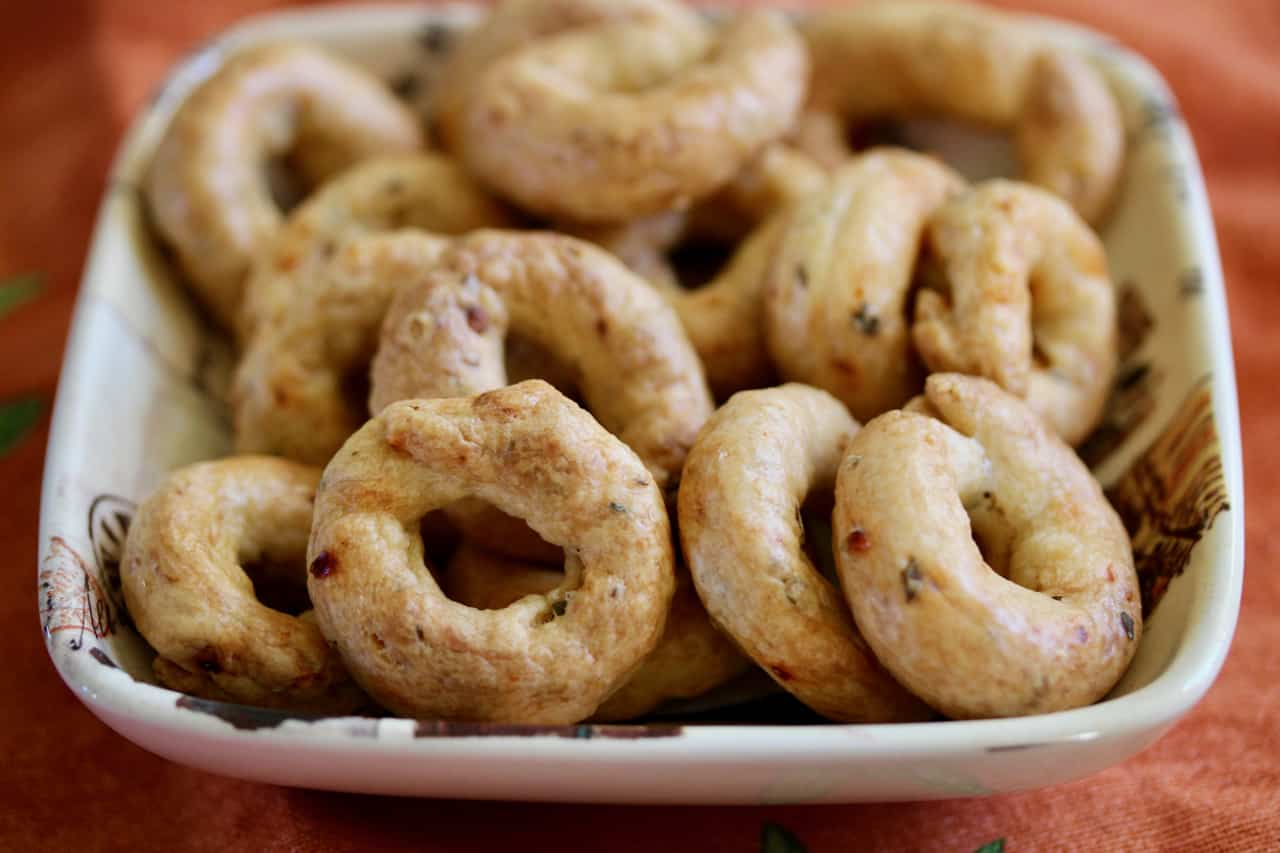
For most people, visiting Italy means Rome, Florence, Venice, maybe Milan, right? Let’s throw in Bologna or Pisa if you wanna get real fancy. But how many tourists make it to the southern part of the Boot? Destinations like Napoli, the Amalfi Coast, and even Sicily might be on the list after hitting the main handful of hotspots; but an oft-overlooked part of Italy is the *heel* of the Boot– the region of Puglia (roughly pronounced ‘POOL-ya’, though there’s a particular ‘lya’ sound made by the ‘gl’ that we don’t have in English). This is the wild, untamed, rural Italian countryside that largely flies under the radar for non-Europeans. It feels like a different country than the rest of Italy– I was thoroughly enamored by its unique character, wonderfully hospitable people, and of course the special local cuisine.

Clockwise from top-left: The cliffside Grotta Palazzese restaurant in Polignano a Mare; the 13th Century octagonal Castel del Monte; ancient stone tablet in Castello Svevo di Barletta; hay field in rural Puglia.
I also had a personal reason to go there: my father was born in the coastal city of Bari, a place that I could not have anticipated in its intensity and charm. Bari has endured a number of foreign invasions (not to mention natural disasters, wars, and the plague!) over the centuries, including Greeks, Normans, Saracens, Sicilians, Romans, and Byzantines. Each plundering group left indelible marks on the culture, architecture, and cuisine of the city, including the 11th-Century Cattedrale di San Sabino, the Basilica di San Nicola that houses the remains of St. Nicholas (the OG Santa Claus), and the Norman-built Castello Svevo. As a major port city on the Adriatic Sea, Bari went through so much change due to all these, uhhh, visitors, and I love that present-day Bari is a culmination of this upheaval, like puzzle pieces that make up a sum greater than its parts.
My first impression when I laid eyes on the walls of the old quarter was that it looked an awful lot like Jerusalem with its white stones, labyrinthine passages, and archways. You could clearly see the Greek and Middle Eastern influences that are absent in northern regions of Italy. Like many ancient Italian cities, there is a walled “old city” that is heavily steeped with history and wonder, echoing thousands of years of conflict, family traditions, and evolving culture within its weathered walls. Like Jerusalem, a modern city was built around this older section, so Bari has both an ancient vibe, as well as a young one. In fact, Bari is home to a young and vibrant population because of its university. Additionally, the city’s centuries-long maritime/beach culture draws on both its ancient history and contemporary scene. We didn’t get much time to explore the modern area, as we stayed within the walls of Bari Vecchia (Old Bari).
This was both mesmerizing and a little jarring. I had never seen anything quite like the daily goings-on of Bari Vecchia. The “streets” are not so much roadways as narrow stone alleyways, but that does nothing to curtail the constant incursion of barely-fitting vehicles who “tetris” themselves between Pugliese grandmothers sitting in front of their homes (i.e. in the actual “streets”) making orecchiette, Vespa scooters whizzing by, children playing, and soccer fans screaming at literally all hours. Brightly hued laundry and soccer banners criss-cross the alleyways overhead, such that colors are always waving in front of your eyes. Even the concept of a “front door” is something altogether different in Bari Vecchia; many homes have broad doorways that open right onto the alleyways– we could see Vespas parked in interior courtyards and big families preparing to sit down for lunch right there, 5 feet from the street, with nothing but a half-drawn lace curtain separating inside and outside. This way of life gives a whole new meaning to the concept of community.
It was a visual scene that never stopped moving, never fell silent… until the afternoon siesta, otherwise known as il riposo in Italian. Then, the whole of Bari Vecchia literally shut down almost at once—shops shuttered, doors closed, vehicles stopped humming, voices hushed. It was the only time of day that the normally chaotic alleyways were not bustling with people, shopkeepers, wheels, and animals. Most of the big cities still have plenty of activity during the siesta (and perhaps this was also the case in the modern part of Bari), but here was so very quiet– all business establishments closed up, and the lace curtains pulled on the home doorways. With the alleys deserted, an eery peace descended on Bari Vecchia, and I inhaled the charm and the mystical beauty of the ancient stones and secret corners… until the neighborhood sprang back to life a couple of hours later, like nothing had happened. And then the whole thing would happen all over again the next day, and the day after that. The Barese way of life was utterly fascinating– truly a throwback to another era. I would have loved to photograph the daily affairs of the residents, except that that probably would have been rude and a weeeee bit creepy! (But I found this fun video to give you an idea.) Needless to say, we’d never experienced anything like it, and it took some time to wrap my head around it.
We were also able to get outside of Bari to see a bit of the rugged Pugliese countryside, which was yet another world altogether. Much of the landscape that we saw boasted olive groves, grapevines, and other agriculture that the region is known for. Fields and vineyards line the rural roads– if you could call the narrow, bumpy, dirt paths “roads” at all. Puglia is a prolific wine and olive oil region, and despite high production, it doesn’t receive the same recognition as other areas like Tuscany. Two of the region’s indigenous grapes are primitivo and negroamaro, and the olive oil is bright and fruity– possibly my favorite olive oil in all of Italy.
One of the most unique features of Puglia are the conical white structures dotting said rural countryside, called trulli. These are ancient dwellings that served as homes for peasant families, dating back to at least the 13th Century. You will see them in agricultural areas, but the greatest cluster of them is in the town of Alberobello in Bari Province, which is designated as a UNESCO World Heritage Site.
Alberobello is mostly a tourist town now, but these cones have stood for centuries and are still used for homes, as well as restaurants, souvenir shops, and hotel cottages– there’s even a giant trulli church! We got to spend a night in a trullo (the singular form of ‘trulli’) that had been converted to a hotel room, and I can say definitively that I’ve never stayed anywhere like that before! They are surprisingly roomy and very comfortable, and they have a bit of a fairytale vibe– the whole town does, really. As in most places, I would have loved to spend more time exploring!
But let’s get down to the really important stuff—the grub. The south of Italy has historically been one of the poorest areas of the country. For centuries, people have had to make do with very little in the way of luxury, whether it be food or other extravagances. In this cucina povera (cuisine borne of poverty), people had to work with what was available locally, and lucky for them, the natural resources are kind: vegetables, legumes, grains, and fish are ubiquitous in Pugliese cooking. With these ingredients, the inhabitants of Puglia have created a rich and varied cuisine that, in my opinion, is some of the very best food in all of Italy. The meals we had were indulgent and special, one after the other– yet made with modest, straightforward elements. As in most places we visited throughout the country, it was clear that so much love was infused into this food. Some of the most well-known Pugliese specialties include burrata and caciocavallo cheeses, focaccia, and rustic hand-rolled pasta shapes like orecchiette and cavatelli; naturally my favorite dishes were of the high-carb variety. The semolina-based pastas were hearty and toothsome– no delicate cappellini here! The cavatelli are flattened and rolled into hollow, elongated shells with one’s fingers (something like tiny hotdog buns), while orecchiette are pressed by hand into the shape of “little ears” (the meaning of the word ‘orecchiette’). Some families have multi-generational traditions of making pasta. The orecchiette were especially delicious as a bed underneath veal braciola rolls with a rich red sauce, and another traditional preparation is with cime di rapa, or broccoli rabe (which I didn’t get to try because we ran out of meals). The orecchiette were only rivaled by the cavatelli with tomatoes, basil, and grated caprino cheese that I had at Osteria Le Arpie… I can still taste them, and I’m sad that they’re not in my belly RIGHT NOW.
As for focaccia, upon asking where to get a good slice, our B&B host’s son personally walked us through the old city to the Panicifio Fiore, where we acquired generous pieces of pillowy, fluffy focaccia bread topped with blistered tomatoes, olives, and herbs. That’s a recipe for me to explore another time– definitely a highlight of Barese cuisine. And guys, there’s just so much more in Puglia; I mean, we only had a few days in the region, and it would’ve taken weeks (months?) to eat our way through the local culinary delights.

Clockwise from top-left: Focaccia at two different bakeries whose names I sadly didn’t write down (doubly sad that I only photographed them and didn’t actual eat them); Potato “Millefoglie” layered soufflé with truffles at Montegusto Cucina e Ospitalità near Castel del Monte; slice o’ focaccia at Panificio Fiore (which I DID eat); Napoli pastries at Pasticceria Delizie in Alberobello.
In-between stuffing our faces with pasta at mealtimes, we munched on perhaps the best-loved Pugliese snack: taralli. These are roughly akin to pretzels in that they are savory, crunchy, bite-sized snacks that are very addictive. They are also cooked much like pretzels, since they get a quick bath in boiling water before going in the oven (however, no lye is involved). Unlike pretzels (and far superior), they are made with olive oil and white wine, and they may be flavored with fennel, black pepper, tomato paste, cheese, or any number of herbs. My Spicy Pepper & Herb Taralli are spiked with hot Calabrian chile flakes and oregano. Although this Italy blog series is focused on desserts, in the case of Puglia, I felt like these would be perfect to include as an example of the region’s best baked goods.
So these look fairly simple, yeah? And they are supposed to be… but this recipe was quite an adventure. Every tarallo (singular of ‘taralli’) I’ve ever seen in my whole life is a crispety-crunchety ring. They are sold in bags everywhere in Italy (and they’re not too hard to find in well-stocked markets in the States!), but they hail from Puglia. Guys, I could not find a bloody thing about the history and origin of taralli, except that maybe the name derives from the Greek ‘toros’, meaning toroidal, or round. (On a side note, what I did find is that there is a taralli-only bakery in the city of Lecce, south of Bari, called Il Tarallo Giusto, which is definitely going on my destination list for my next Puglia visit!) Anyway, I tried several different recipes from reputable sources, and every single one came out with a weird chewy texture that was stale within 24 hours. The doughs were exceedingly oily every time, so it was probably either an issue of the flour/oil/wine ratio being off, or my mixing method was wrong. Most of the early recipes that I tried had about 1 cup each of oil and wine for 4 cups of flour, which seemed like too much, but they couldn’t all be wrong. I tried hand-mixing and mixer-mixing, and it didn’t seem to make a difference. The baking time was generally about 30 minutes, and I wondered if this was enough– maybe they needed more time to get crisper?
For whatever reason, the recipes weren’t working for me, so I searched for something with less liquid to hopefully yield a firm and non-greasy dough. I finally stumbled upon the recipe below, which is from an Italian source and fit the criterion of higher flour-to-liquid ratio. The other interesting thing about this recipe is that it calls for heating the oil and pouring the hot oil into the dry ingredients, then mixing it together to form a crumbly dough. You then add the wine in slowly, so I’m thinking that this creates a tighter emulsion. (It might also bloom the spices a bit, which is a nice bonus.) My dough was still not completely smooth, but much firmer and easier to work with. No oil leached out at all, so I felt like this time would be different. I like that the dough is mixed by hand, because a) my imaginary Pugliese grandmother would do it that way, and b) I was able to get a better sensory feeling for the dough. I baked them a touch longer too, and finally I got me some crunch-tastic taralli! I kept thinking they were going to get stale, and I even rationed them purposely for a full 2 weeks to see how the taste and texture would hold up; I was thrilled that every last one stayed crunchy and delicious! I would say these are 95% there for me– I’d just like to get my dough a little smoother because I’m a perfectionist, but I am so happy with these after at least 6 tries with other recipes. I think a little more practice kneading the dough will get me the rest of the way. 🙂
One more thing– many sources that I read said that good olive oil makes the difference between good taralli and mediocre taralli. If you have a nice Italian finishing oil, this is a good place to use it. I happened to pick up a small bottle in Alberobello last summer, and I was really happy to have it on hand for this recipe!
These special snacks from Puglia will always be a staple snack in my house. It’s quicker to reach for a bag at the grocery store, but these really are so easy to make at home, and you can customize your own flavors. They are perfect as a dinner party appetizer, especially paired with Italian wine or cocktails. I love having them around as a reminder of the way-too-brief time I spent in Bari and the Puglia region– if you are planning a visit to Italy, I highly recommend getting off the beaten path and heading to the heel of the Boot!
This is the 4th installment of my series on Italian regional desserts. Start here for an intro to Italian regional cuisine, my experiences traveling in Italy, and information about Italian pantry items for baking. Next is the incomparable Eternal City, Rome.
Spicy Pepper & Herb Taralli
Inspired by Buttala Pasta
Yields about 60-80 taralli
This recipe calls for all-purpose flour, though if you have Italian “Type 00” flour, you can use that instead (same quantity), which should make them lighter and flakier. I haven’t tried it, but I plan to next time I make these.
- 500 grams (4¼ cups) all-purpose flour
- 2 tablespoons kosher salt, divided
- 1 tablespoon dried oregano
- 2 teaspoons crushed red pepper flakes, preferably Calabrian
- 100 grams (scant ½ cup) good-quality extra-virgin olive oil, preferably Italian/Pugliese
- ⅔ cup dry Italian white wine, plus 2 more tablespoons if needed
Heat the olive oil over a medium-low burner in a small saucepan until it is shimmery; do not let it boil or splatter.
Meanwhile, whisk together the flour, 1 tablespoon kosher salt, oregano, and red pepper flakes in a medium mixing bowl; make a well in the center. When the oil is hot, carefully pour it into the well; it will sizzle and start to absorb a little flour. When the bubbling has mostly subsided, stir more flour into the center with a wooden spoon and work your way outward. The dough will be dry and clumpy at this stage. Add ⅔ cup white wine and work it into the dough with the spoon or your hands (once it’s cooled enough), blending in any remaining loose flour bits. If it is still dry, add up to 2 more tablespoons of wine, one at a time, until the dough feels more hydrated and pliable. The dough should now be fairly firm.
Transfer the dough to a lightly floured work surface to continue kneading for a few more minutes until the dough is fairly smooth. (It’s okay if it’s a bit shaggy/rough.) Form the dough into a ball, place it back in your mixing bowl, and cover the bowl with plastic wrap. Let the dough rest at room temperature for 30 minutes.
Meanwhile, preheat the oven to 375°F and place a rack in the center. Line 2 sheet pans with parchment paper and set them aside. Add the remaining 1 tablespoon salt to a medium pot filled ⅔ with water and bring it to a boil.
While the water is heating, uncover the dough and bring it back to your work surface (unfloured this time). Divide the dough into chunks/wedges/pieces that work for you. Break or cut off small pieces, about 15g each (a little bigger than a walnut), and roll each piece into a rope about 4″ long and 1cm thick. Loop each rope into a ring shape and pinch the ends together. Repeat until all the dough has been formed into rings.
Prepare a few layers of paper towels near the stove (not too close, obviously). When the water has come to a boil, drop 6 or 7 taralli into the pot one-by-one, making sure they don’t stick together. You may want to give them an extra pinch to make sure the ends hold together. The rings will drop to the bottom at first, then float to the top. Using a spider or slotted spoon, give them a gentle nudge after several seconds in case they have stuck to the bottom of the pot. As soon as they float to the surface, lift them out of the water and transfer them to the paper towels, arranging them without touching each other. (They sort of look like wrinkly shrimps.) Allow them to drain for a few minutes, then transfer them to the sheet pans, spacing them about 1″ apart; they will not rise or spread, so they can be close together.
Once the first sheet pan is filled with taralli, bake them for about 35 minutes, rotating the pan halfway through. They should be lightly golden and crisp. Set the pan on a wire cooling rack, and slide the pan out from under the parchment after a few minutes. Repeat with the second tray. Once all the taralli are cooled to room temperature, they can be stored for 2 weeks (maybe longer?) in an airtight container.
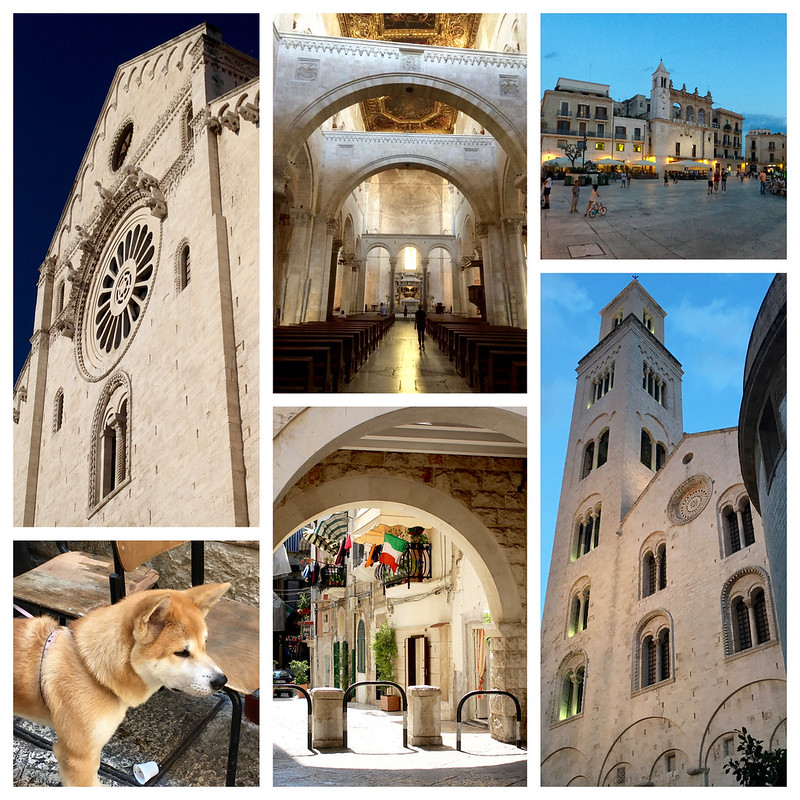
Clockwise from top-left: Cattedrale di San Sabino; interior of the Basilica di San Nicola; Piazza Mercantile; Cattedrale di San Sabino at twilight; quiet Bari Vecchia passageway during il riposo; sweet Pugliese puppydog!
© Dafna Adler & Stellina Sweets, 2017.





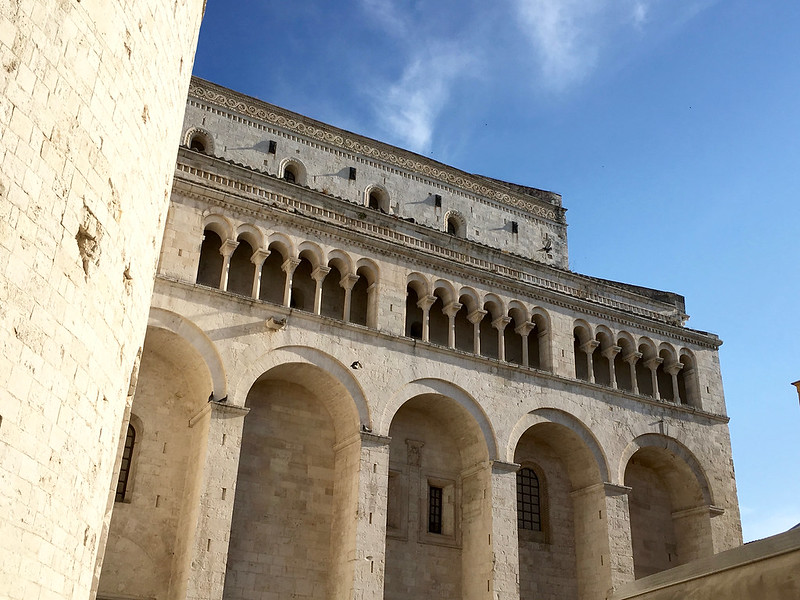



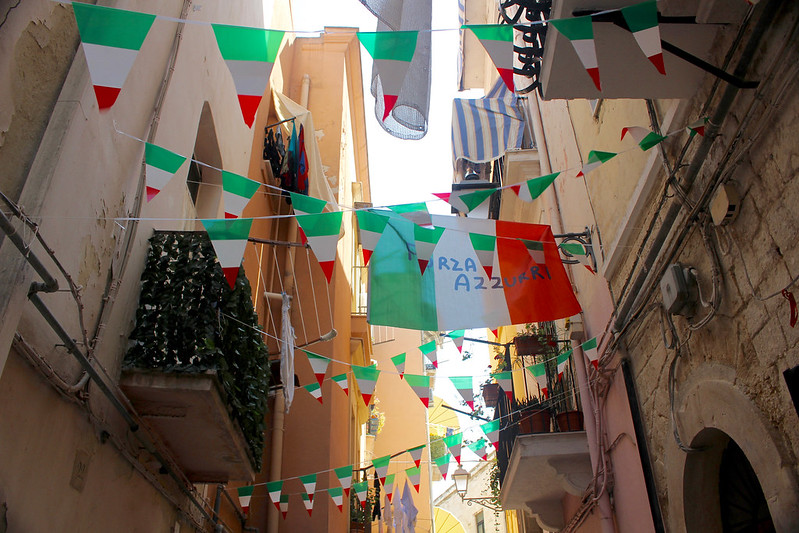


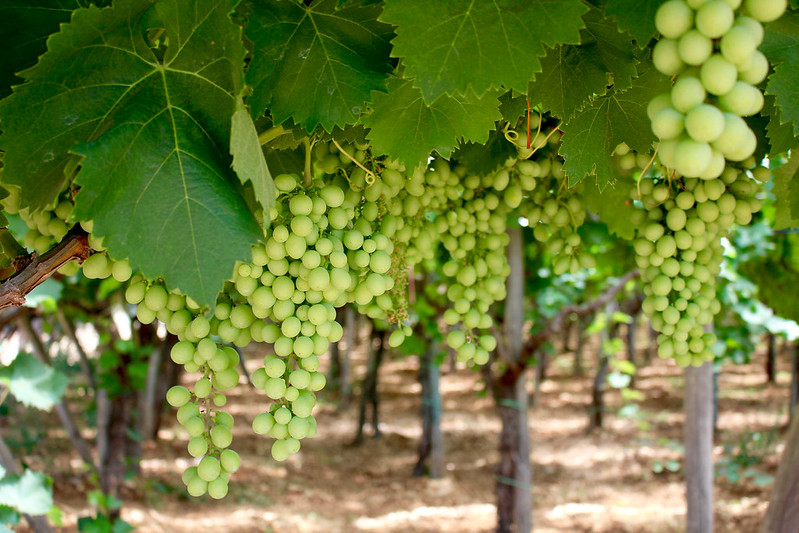

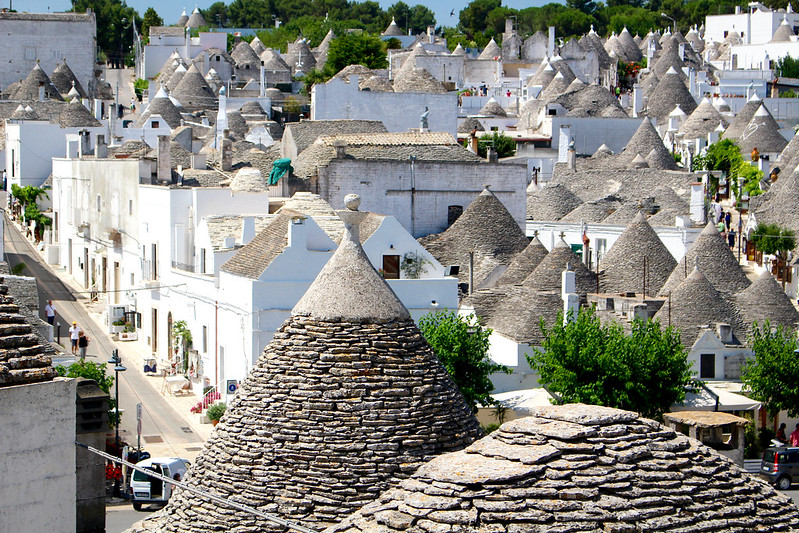


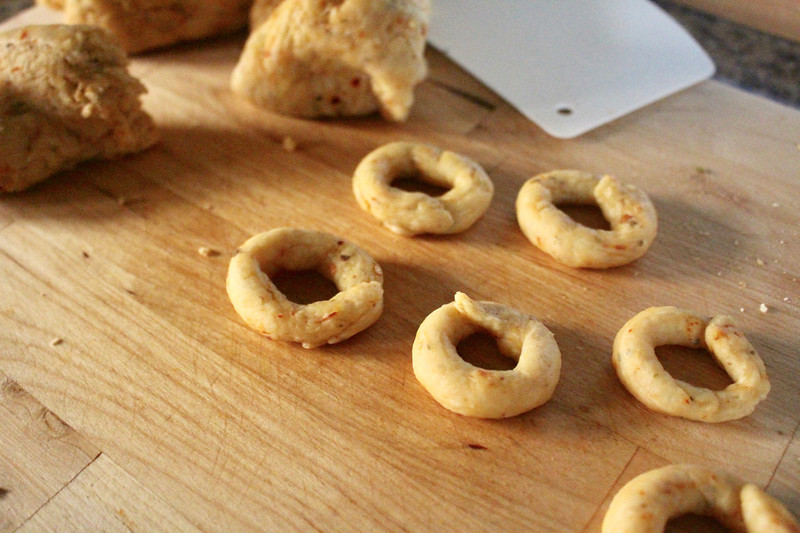
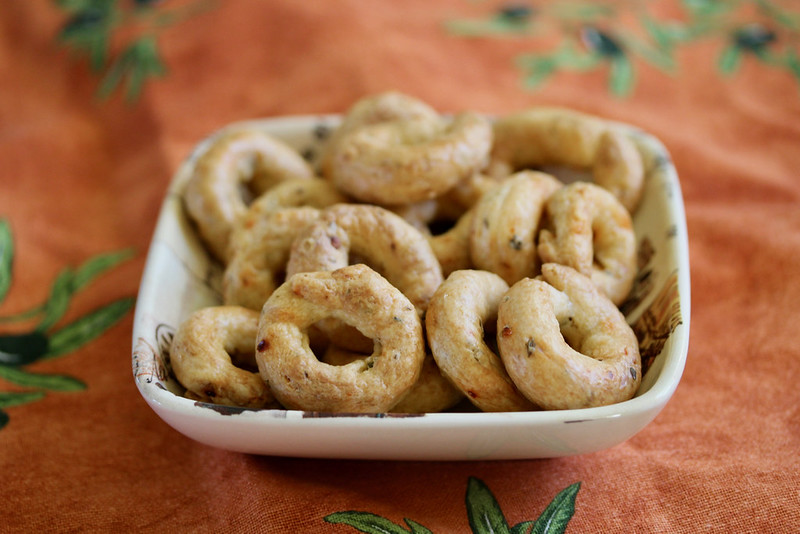
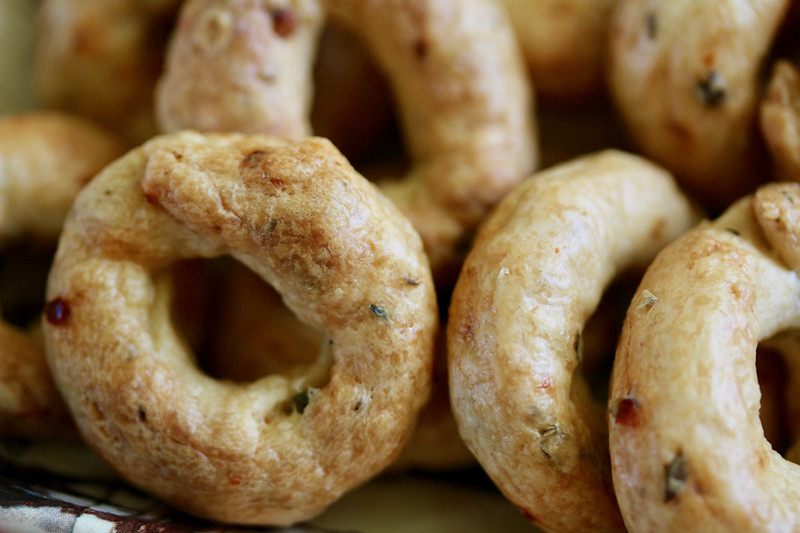
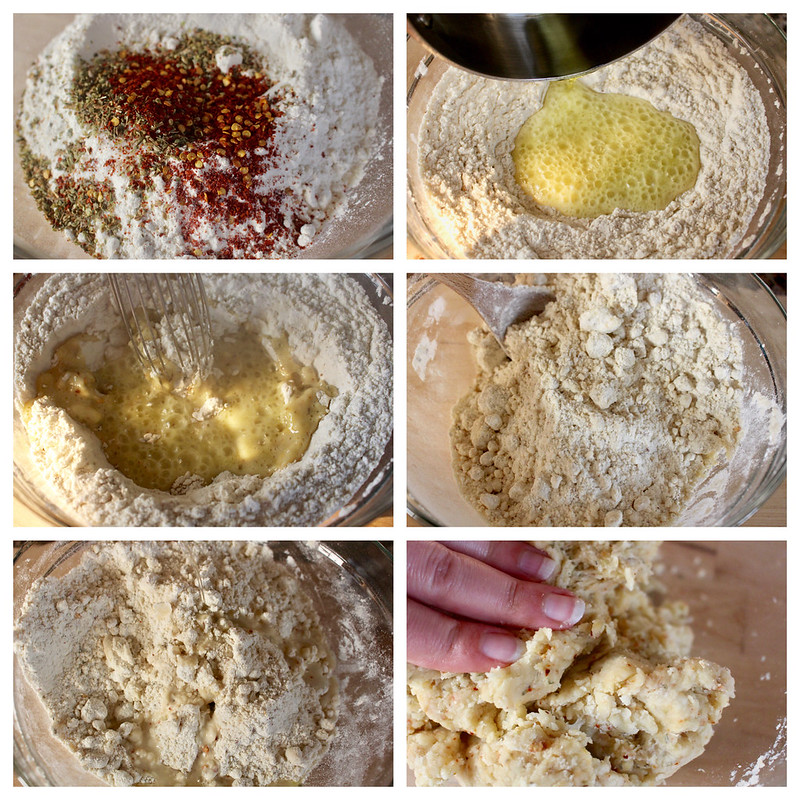


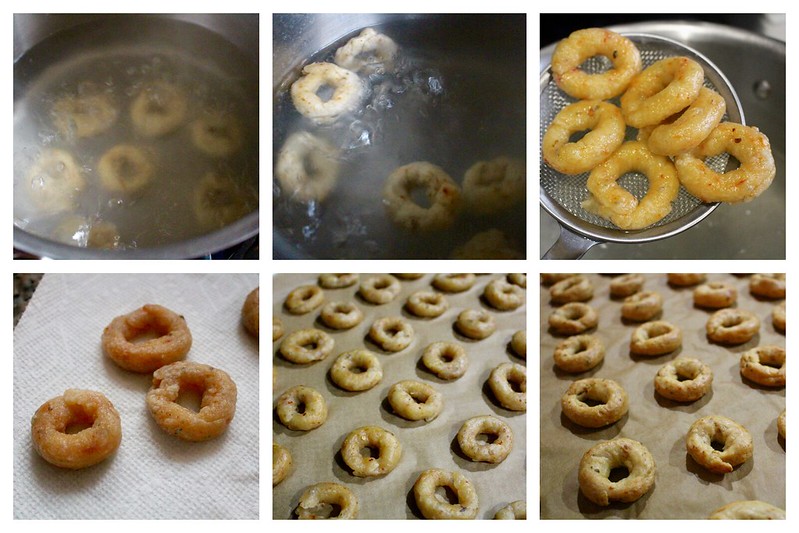

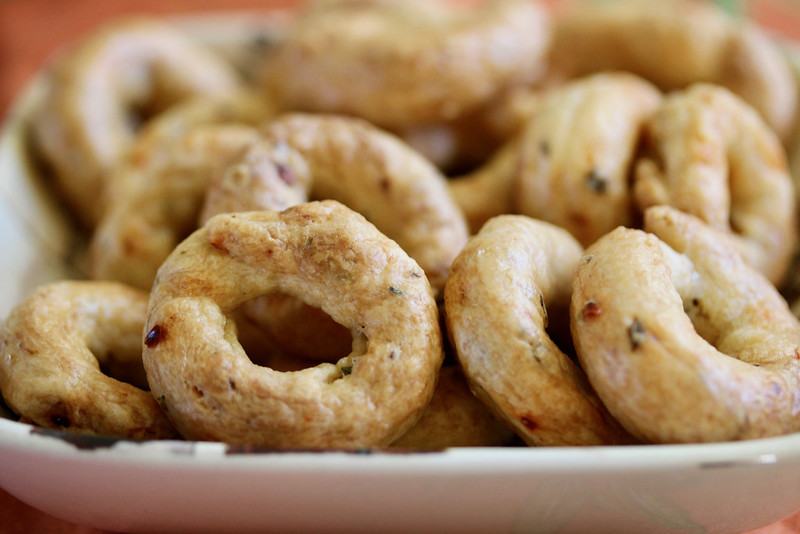
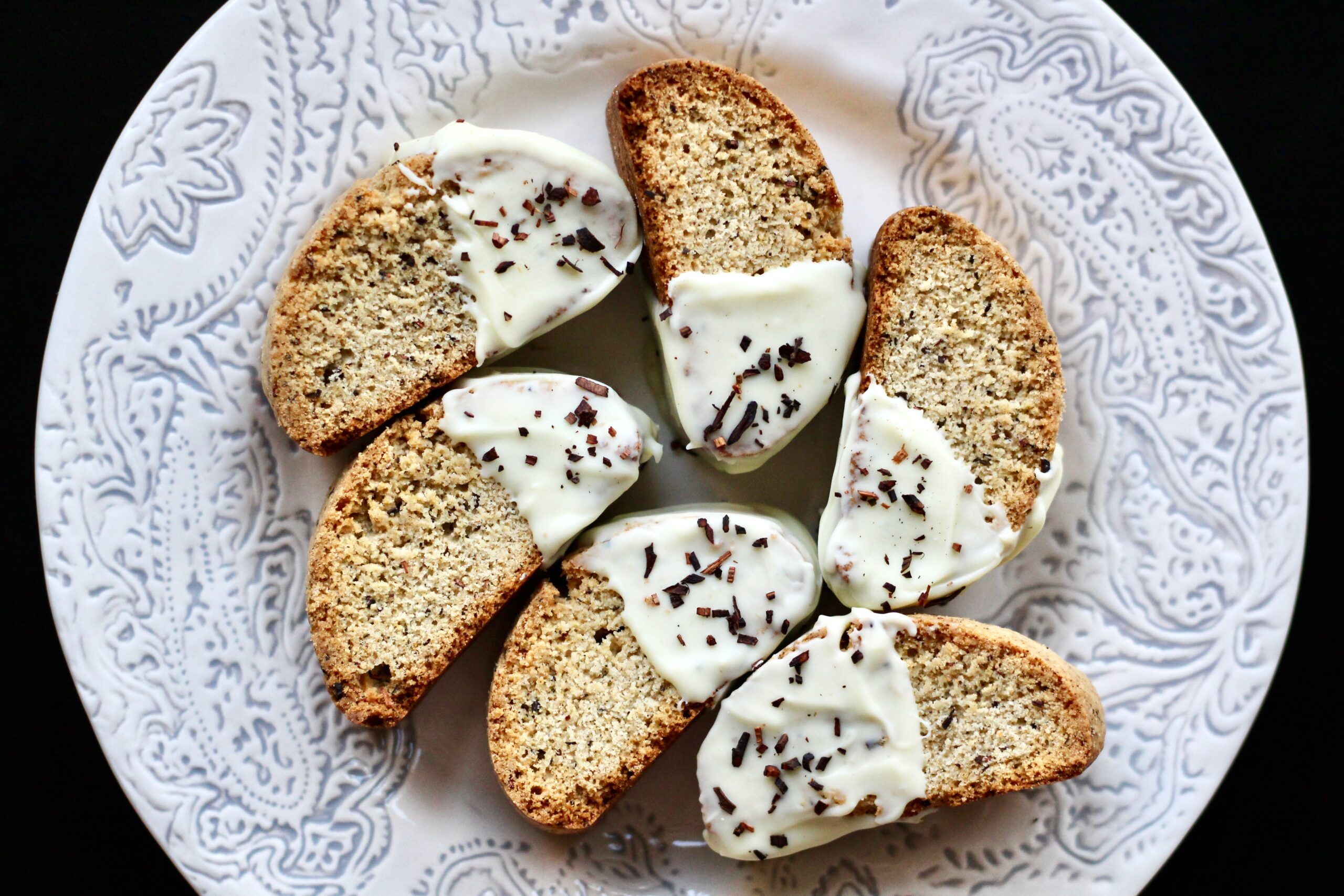
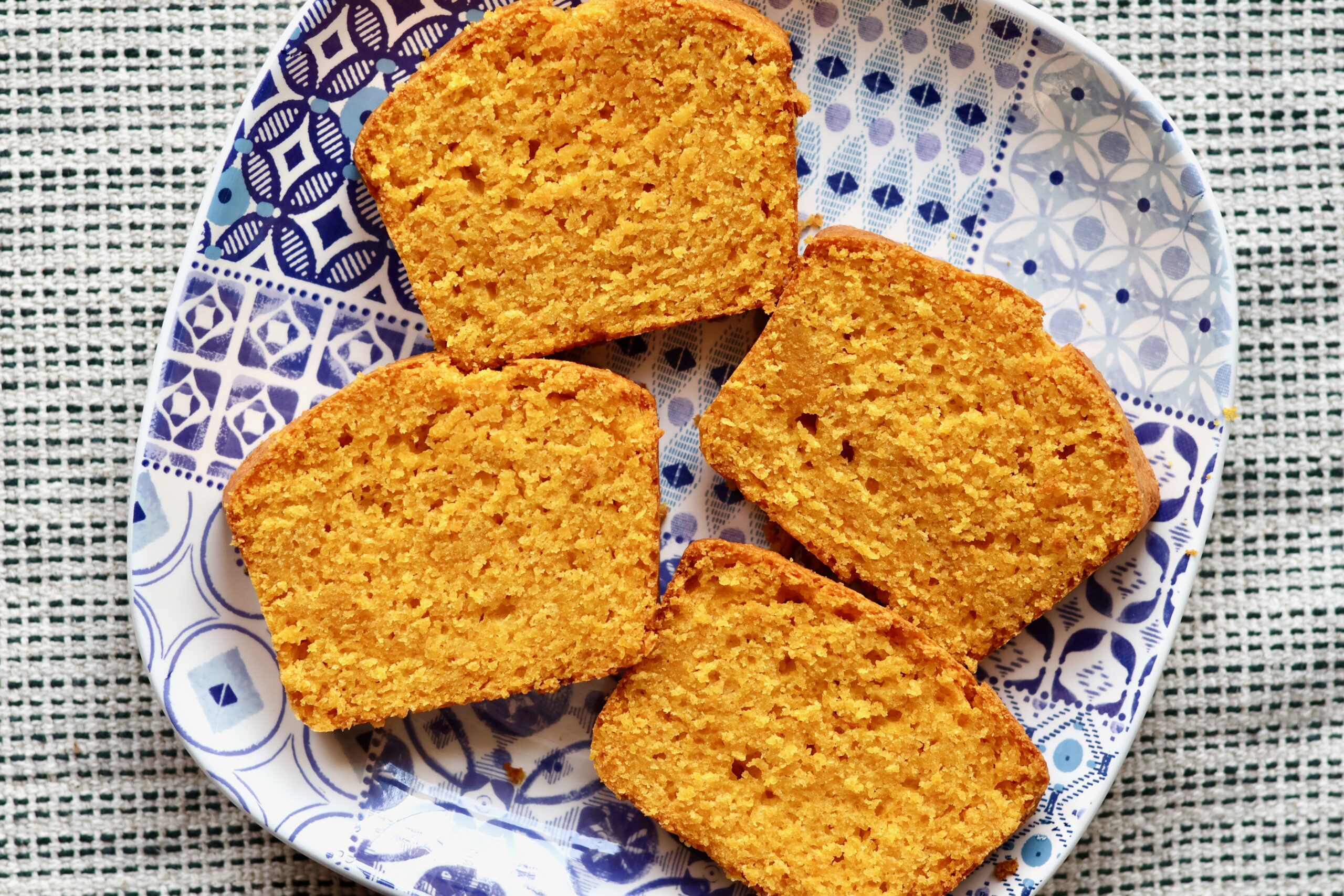
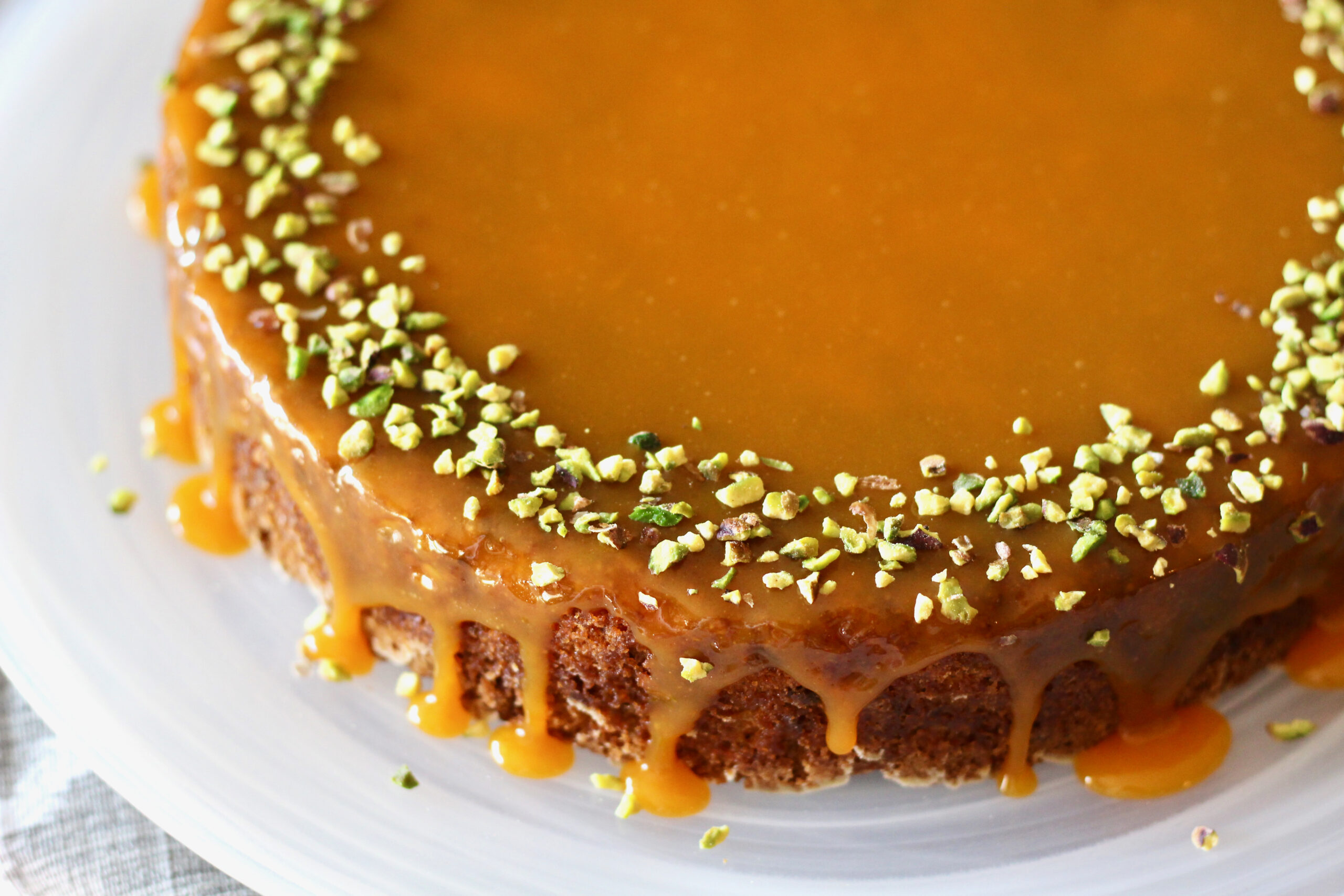
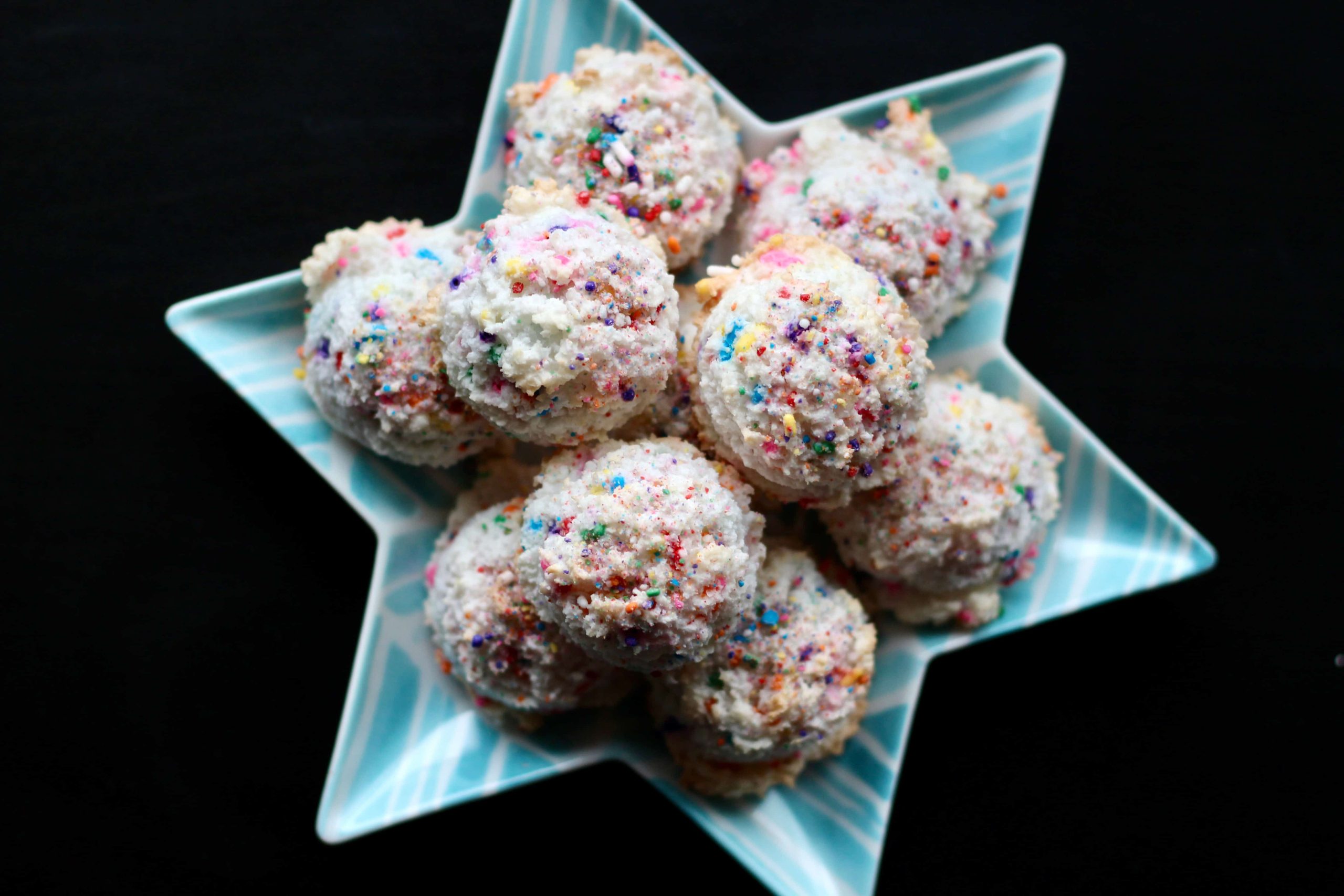
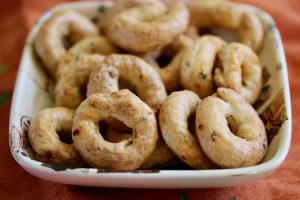



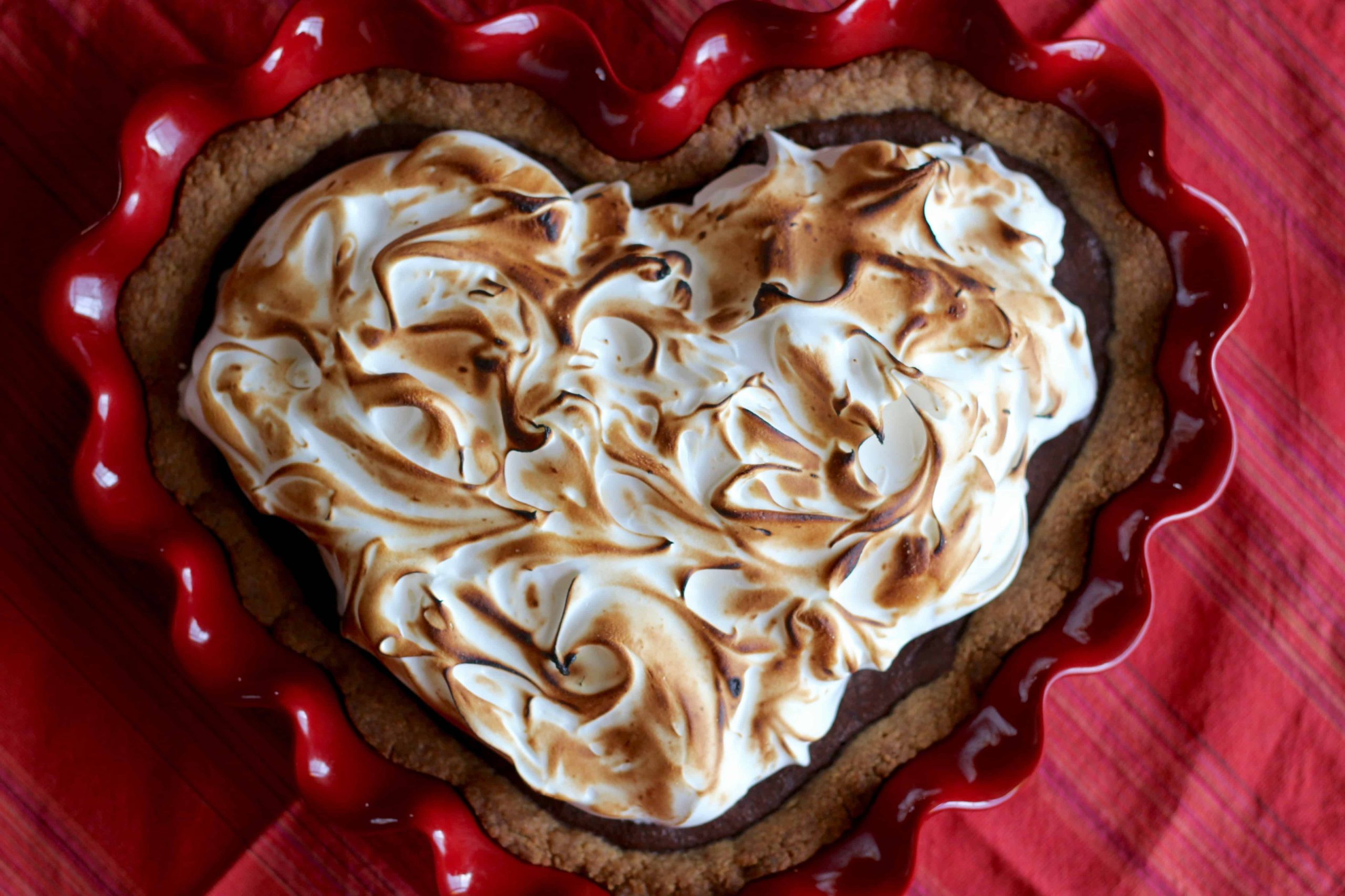

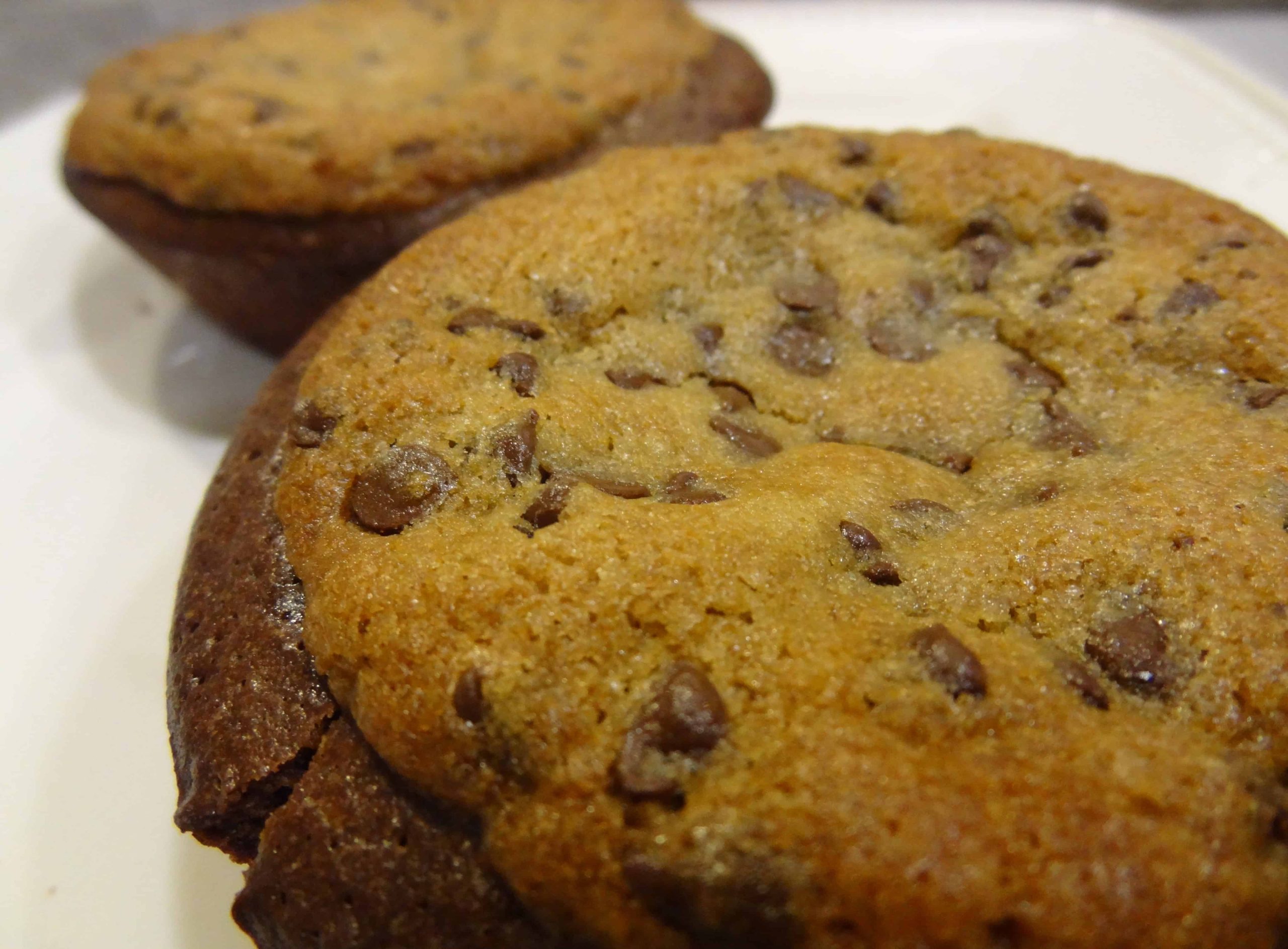
2 Responses